If you have bladder problems... Pelvic floor and sphincter exercises.
IF YOU HAVE BLADDER PROBLEMS... EXERCISES TO STRENGTHEN THE PELVIC FLOOR AND SFINCTER.
No one counted how many women are forced to avoid society, how many are afraid to travel and even walk to the store, located a 15-minute walk from home. This is due to the weakening of the muscles responsible for the normal functioning of the bladder. Gymnastics helps to improve the situation, strengthening the muscles of the abdomen and perineum.
A healthy bladder stores fluid until a certain volume is reached. Then the volumetric receptors in the stretched wall of the bladder give a signal to the central nervous system that it is time to be free. A person has a feeling of fullness, pressure in the lower abdomen. The act of urination follows, in which the bladder contracts. This is a very complex process, including the coordinated work of the muscles of the bladder walls, the sphincter and the nerves that coordinate muscle contractions. And if at least one of the components of the genitourinary system does not cope with its functions, problems with urination begin. And already when urine is involuntarily released with any increase in pressure in the abdominal cavity, for example, when laughing, coughing, lifting weights, then experts speak of urinary incontinence.
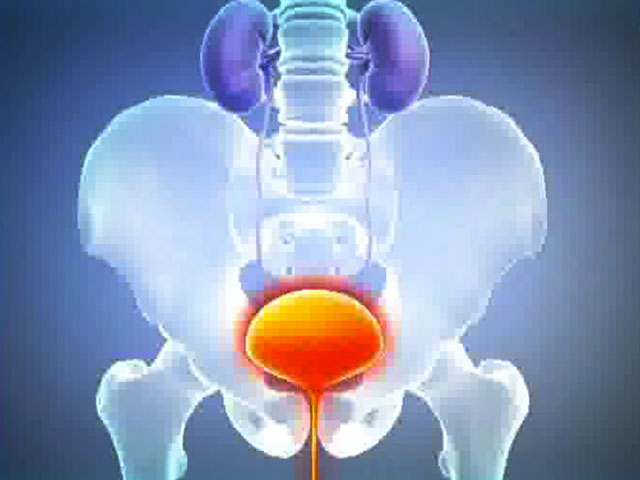
The main cause of problems with the bladder lies in the reduced tone of the sphincter - the so-called annular locking muscle when leaving the bladder. Such problems most often occur in women during menopause and especially after it due to changes in hormonal balance.
In addition, in order for the pelvic organs to work normally, their anatomical location must be correct, which is largely determined by the state of the muscles of the pelvic floor. Therefore, with a “weak bladder”, it is so important, after consulting with a doctor, to strengthen the muscles of the pelvic floor and the sphincter. It is also necessary to strengthen the abdominal muscles.
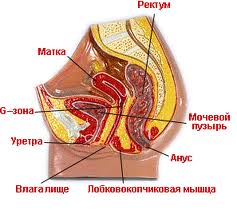
Arnold Kegel is a doctor who developed a system of simple exercises to strengthen the muscles that hold urine in the bladder. Kegel exercises are not a panacea, but for people suffering from mild forms of incontinence, they help to completely get rid of this annoying disorder.
Kegel exercises are considered the simplest and easiest way to train the muscles responsible for excreting urine. This complex includes training to prevent mild and drip urinary incontinence or reduce its manifestations in both men and women. It is believed that the involuntary release of urine drops in women associated with pregnancy and childbirth can be prevented if a special set of exercises is regularly performed.
The complex of Kegel exercises includes workouts of various types of complexity, all of which help strengthen the muscles of the pelvic floor. They must be performed constantly and regularly, gradually increasing the complexity and duration. Exercises for mild and drip urinary incontinence are equally effective for both sexes. These include:
SLOW COMPRESSIONS.
To feel the muscles of the perineum that need to be trained, try the next time you visit the toilet, deliberately interrupting urination, to understand which muscles need to be strained for this. This Kegel exercise involves tensing the muscles that are used to stop the process of passing urine. It is necessary to strain them, count to three, and then relax. During relaxation, they also count to three and again strain the muscles. Over time, you can increase the voltage time to 5-20 seconds.
If all women did an exercise daily to strengthen the muscles of the perineum: in their free time, doing household chores, being on the subway or at a bus stop waiting for transport, sitting or standing, then many problems with the bladder (as well as prolapse of the uterus and vagina) would be would avoid.
A more difficult level of this exercise for mild and drip incontinence in women and men is the so-called lift. At the same time, a person gradually clamps the muscles with a small force (1st “floor”), then without relaxing them, clamps even more and holds for 3-5 seconds. This is followed by an even higher "floor", on which the duration of the tension also increases, and so on. Upon reaching the 4th-7th “floor”, a slow “descent” begins in the reverse order: from greater tension with a longer duration to less intense muscle contraction.
Abbreviations. This type of exercise involves the fastest alternate relaxation and muscle contraction.
PUSHING OUT.
Kegel exercises of this type are accompanied by the tension of those muscles that are activated when a person pushes. In women, this complex from mild and drip urinary incontinence will be similar to attempts during stool or childbirth. Men need to push, as when urinating or stool.
Exercises that help those who are diagnosed with mild and drip incontinence should be started gradually. To get started, try slow compressions of 10 reps, 5 times a day.
After the simplest level of Kegel exercises with the involuntary release of urine drops has been mastered, you can move on to more complex workouts. So, after a week of regular training, you can add 5 repetitions to each approach until their number reaches 30. Then you need to perform 150 exercises daily to maintain muscle tone. At the same time, you can try extrusion and contraction.
HOW TO DO THE EXERCISES. 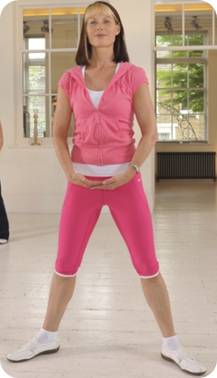
1. Starting position - feet shoulder width apart. The hands support the buttocks. Next, tighten the muscles of the pelvic floor in an upward direction inward.
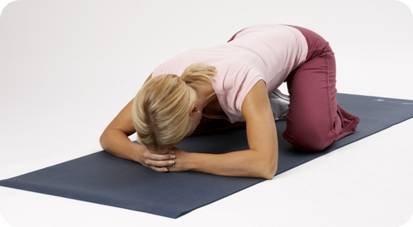
2. Starting position - emphasis on the knees (on all fours), the head rests on the hands. Next, tighten the muscles of the pelvic floor in an upward direction inward.
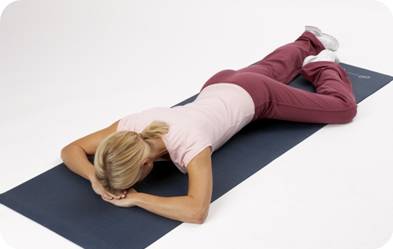
3. Starting position - lying on your stomach. One leg is bent at the knee. Perform alternate tension and relaxation of the pelvic floor muscles.
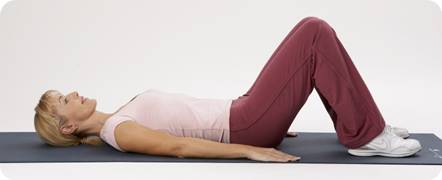
4. Starting position - lying on your back, legs bent at the knees and slightly apart, heels on the floor. One hand rests on the lower abdomen, the other under the buttock - so you can feel that the necessary muscles are contracting. Then squeeze the muscles of the pelvic floor, pulling them up.
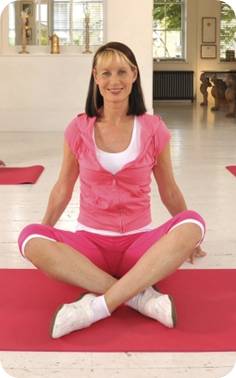
5. Starting position - sitting cross-legged, back straight. Next, tighten the muscles of the pelvic floor inward upwards, as if tearing them off the floor.
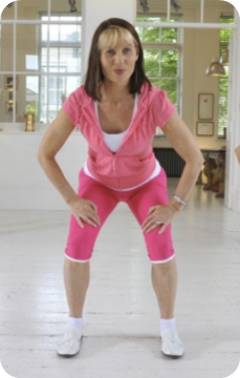
6. Starting position - feet shoulder width apart, hands resting on the knees. The back should be kept straight and the muscles of the pelvic floor should be tightened in an upward direction.
A COMPLEX OF EXERCISES FOR STRENGTHENING THE MUSCLES OF THE URINARY BLADDER.
1. Lying on your back, lift your left leg to a 90 degree angle with respect to the floor. Maintain this position for 5 seconds. Lower your left leg. Perform with your right foot. After that, raise your left leg to a 45 degree angle, maintain this position for 5 seconds, lower your leg. Perform with your right foot. Now lift your left and then your right leg to a height corresponding to the length of your foot (about 30 cm). Hold them up for 5-10 seconds, then lower them. Finally, lift both legs up to a 90 degree angle. Then start lowering them: first to an angle of 45 degrees, then even lower - so that they are at a distance of 20-30 cm from the floor. Hold your legs in each position for 5 seconds. Breathing is arbitrary. When performing this exercise, the abdominal muscles are strengthened, especially in the lower abdomen.
2. Lying on your back, bend your knees, then spread your knees apart. The feet are tightly pressed to each other. Try to spread your knees as wide as possible. Ideally, they need to touch the floor. Stay in the lowest position for at least 5 seconds. Exercise well strengthens the muscles of the perineum.
3. Lying on your back, bend your knees, stretch your arms along the body. Breathe in and out and keep breathing evenly. Slowly, without lifting your back and pelvis from the floor, begin to describe light circles with your hips, as if you want to support a hoop that has accidentally fallen from your waist and is finishing spinning. Make 5 movements clockwise and the same counterclockwise.
4. Sitting on the floor, stretch your legs, put your palms on your knees and gradually, leaning forward, slide your palms over your legs, trying to reach the foot. The forward tilt is done on the exhale, in the lowest position, linger for 5 seconds so that all the muscles of the abdominals and perineum are actively tensed. Return to starting position. Run 5 times.
5. Kneeling on the floor, lower your pelvis to the left of your knees, trying to sit fully on the floor. Hold this position for 5 seconds, then kneel and lower your pelvis to the right of your knees. In the "kneeling" position, inhale, sinking to the floor - exhale. Repeat the exercise 4-5 times.
6. Standing, leaning on the back of a chair or the edge of the table, slowly squat, spreading your knees as far as possible. Try to feel how the muscles of the pelvic floor tense up. Crouching, stay in this position for 5 seconds, then slowly rise. Start with three squats, gradually increasing their number to ten.
7. Standing, do springy slopes. Stand up straight, then lean forward with your arms hanging forward, and counting to yourself to nine, try to lean lower and lower for each count, trying to touch the floor with your fingers.
8. Stand up, press your legs tightly together and slightly bend them at the knees. Start slowly rotating your pelvis clockwise, making three full turns on the count of "three". Then rotate your pelvis counterclockwise also for the count of three.
9. This exercise is called "braiding gait". Stand up straight, then begin to slowly move around the room, placing the heel of one foot to the toe of the other. As you bring your heel to toe, hold this position for a few seconds and tighten your inner thighs. Then relax and keep moving.
10. Take a large ball, such as a football or volleyball, hold it with your feet around your hips and try to walk slowly for 2-3 minutes, making sure that the ball does not fall. When you master this exercise, take a smaller ball. The hardest, but also most effective, move with the smallest ball, tightly gripping it with your hips. Gradually increase the exercise time.
Muscle training is not a quick thing. However, if you perform special exercises every day or at least 5 times a week, then after a while you will feel how the problems begin to recede. And remember - you can significantly improve the functioning of the bladder at any age.
HOW TO HELP YOURSELF.
1. Drink more fluids. You may cut back on your fluid intake in the hope that you end up going to the bathroom less frequently. But the less urine your body produces as a result of dehydration, the more concentrated it will be, making it irritating to the bladder and increasing the chance of developing bacterial infections. Limit your fluid intake only if your doctor tells you to.
2. Accustom yourself to completely empty the bladder and try never to bring it to a strong filling. As one witty gynecologist advises, "When you pass a toilet, never forget to pay tribute to it," even if you don't feel an urgent need to visit it.
3. If you are significantly overweight, drop a few pounds. The loss of 5 to 10% of the weight sometimes provides an unusually effective help in connection with the reduction of pressure on the urinary system.
4. Give up cigarettes. Women who smoke have twice the risk of urinary incontinence compared to non-smokers, according to recent studies. Smoking not only irritates the lining of the bladder and possibly damages sphincter nerve tissue, but has also been associated with bladder cancer. In addition, it contributes to the development of cough, which can cause involuntary loss of urine.
5. Try to eliminate the following foods that cause bladder irritation in many people: alcohol, carbonated drinks, caffeine, milk, citrus fruits, tomatoes, spicy and spicy foods, sugar, honey, chocolate, artificial sweeteners.
6. Avoid colored or scented feminine hygiene products, chemical bath fillers, and scented soaps and toilet paper.
7. Eat as many high fiber foods as possible to avoid constipation. In addition, abundant consumption of vegetables and fruits helps prevent bladder cancer.
8. Never push during a bowel movement.
9. Do not get used to neglecting the need to empty the bowels or bladder.
10. Avoid heavy lifting that deforms the supporting pelvic tissues.




